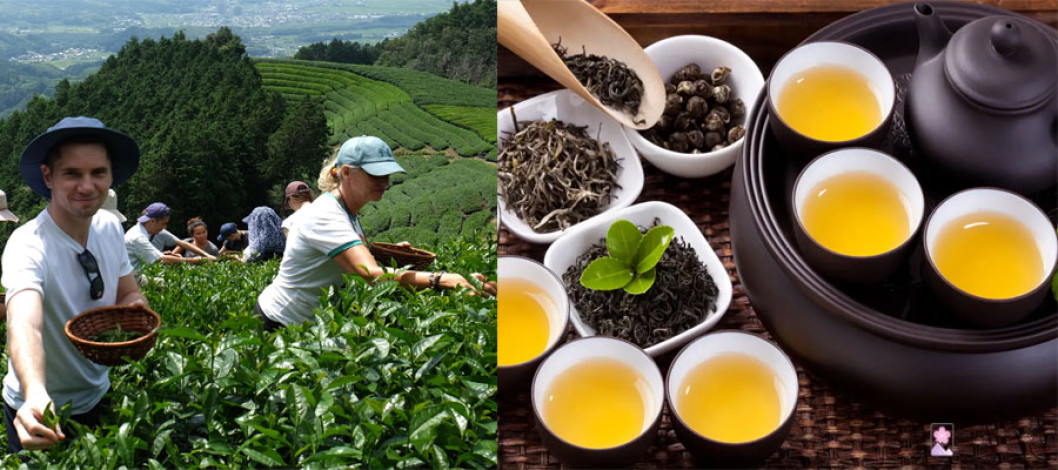
Photo: Collected
In an effort to promote tea leaves, people in tea-producing regions are undertaking various new initiatives, including ones involving saunas.
“Tea loyly” is an activity where tea is poured over heated stones in a sauna to create steam and promote sweating, providing visitors with feelings of deep relaxation. They can also be reinvigorated by sipping cold tea in an outdoor area.
The Finnish word loyly refers to the steam rising from the stones.
Surrounded by tea fields, the allure of Sauna Naya in Koga, Ibaraki Prefecture, is its use of the local specialty Sashima Tea leaves to create loyly. When the hojicha roasted tea is poured over stones heated by a wood-burning stove, a pleasant sizzling sound fills the air, and the body is enveloped in a caramel-like sweet aroma and waves of heat.
The sauna is the brainchild of three individuals in their 20s, including Hiroki Yoshida, 27, the seventh-generation owner of Yoshida Chaen, a local tea farm with a history stretching back more than 180 years. Seeking to spread the appeal of the region, they established a company three years ago specializing in video production and other services.
Their shared love for saunas prompted them to come up with the idea of utilizing a local specialty. In September last year, they opened the facility in a renovated barn that is roughly 70 years old.
“We want people to experience the attraction of Sashima tea and increase the number of people who love both tea and saunas,” said company director Hiromu Nakajima, 26. The facility can be reached in about an hour by train from central Tokyo.
“By combining the sauna experience with tours of the tea fields, we hope to turn this place into a tourist farm where people can enjoy tea all day long,” he added.
Ishidatamichaya En in Shimada, Shizuoka Prefecture, which is known for its tea production, is popular for its loyalty using Kanaya Tea, a local specialty. Guests can relax as the aroma fills the barrel-shaped sauna made from hinoki cypress grown in the prefecture.
“We want to offer an opportunity for people to catch their breath in this hectic world,” said Daisuke Mori, 29, director of the company operating the facility. He hopes he can “help spread Shimada’s tea brand” by providing people with experiences unique to a tea-producing region.
In Yame, Fukuoka Prefecture, known for its namesake tea, a similar facility is also in operation and is gaining popularity.
Unique tea-based products are also being released. Iidaen, a tea manufacturer in Sakai, Ibaraki Prefecture, has begun sales of kamicha chewing tea. It is made using a temomi hand-rolling technique that was showcased at the 2025 Osaka-Kansai Expo.
Produced by drying tea leaves rolled as thin as needles, it can be eaten like mints. The catechins in the tea leaves are said to help prevent bad breath and cavities.
“We want to spread new ways to enjoy tea,” said Iidaen representative Kohei Iida, 41.
Declining tea farmers, consumption
The tea farming industry faces issues of aging farmers and declining numbers of operating farms.
According to statistics from the Agriculture, Forestry, and Fisheries Ministry and others, the proportion of people aged 65 and older among those whose primary occupation is tea farming rose from 51% in 2000 to 61% in 2020. The number of tea farms nationwide dropped from 53,687 in 2000 to 12,325 in 2020, a decline of nearly 80%.
While consumption of so-called green tea beverages in plastic bottles and cartons has been increasing, that of loose-leaf tea, which needs to be brewed in a teapot, is on the decline. Annual household consumption of loose-leaf tea has fallen by over 30% per household from 982 grams in 2008 to 671 grams in 2024.
Source: Online/GFMM
Comment Now